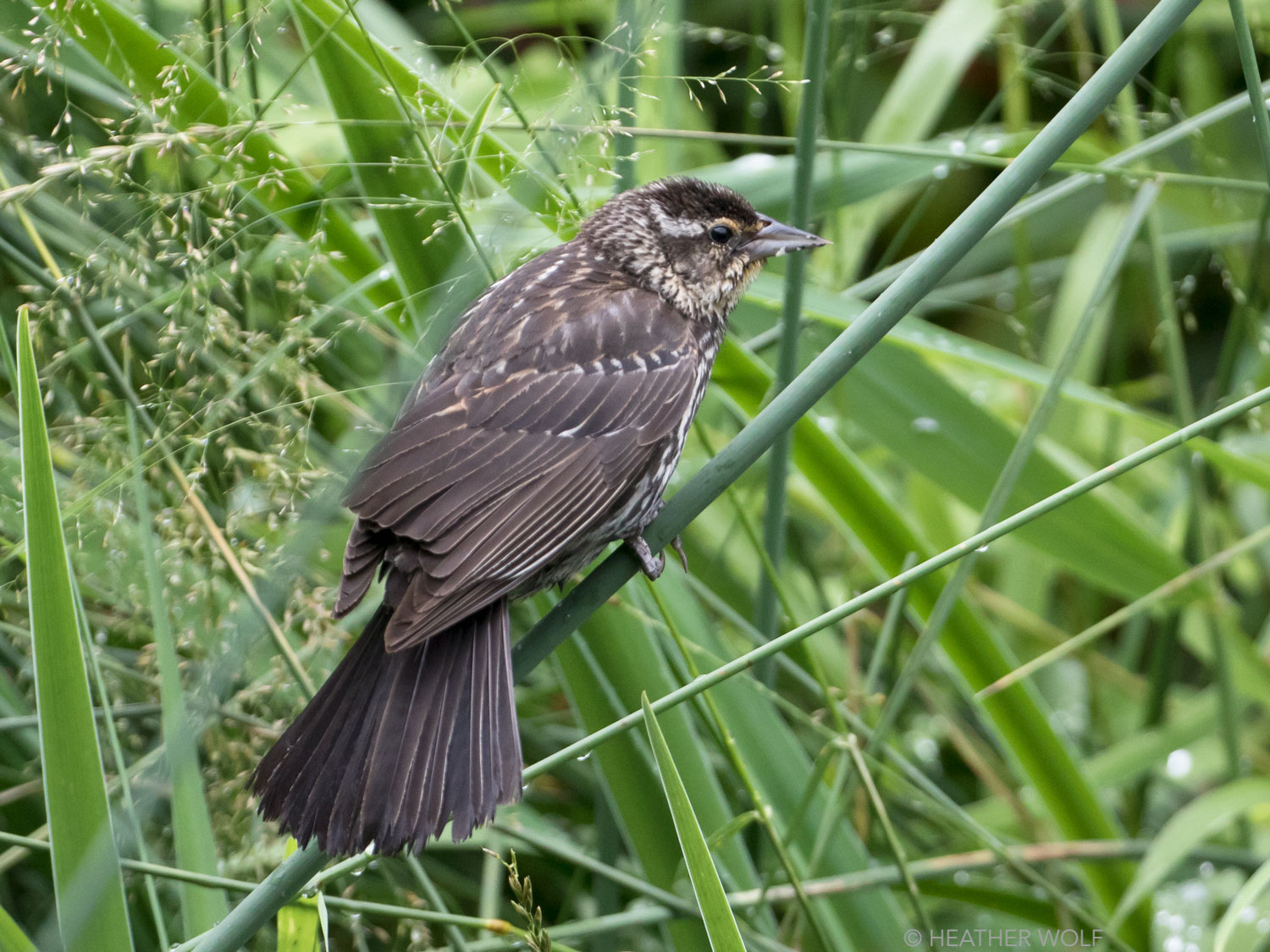Brooklyn Bird Watch: August 23
Red Winged Blackbird. Scientific name: Agelaius phoeniceus.

Today, Brooklyn Bird Watch features another excellent Heather Wolf photo taken in Brooklyn Bridge Park of a female Red-winged Blackbird.
Some say that the Red Winged Blackbird is the most abundant land bird in North America. Wikipedia says that the Red Winged Blackbird is the “best studied wild bird species in the world.” The male is all black with a striking red shoulder and yellow wing bar, while the female is a nondescript dark brown. Seeds and insects make up the bulk of the red-winged blackbird’s diet.
And speaking of polygamy, the fundamentalist Mormons don’t have anything on the The Red-winged Blackbird. According to Cornell, it is a highly polygynous species, meaning males have many female mates. In some populations 90 percent of territorial males have more than one female nesting on their territories. Audubon says the Red Winged Blackbird “usually nest in loose colonies, with a male attracting up to 15 females to nest within the territory. And yet it is also more complicated than it sounds: “one-quarter to one-half of nestlings turn out to have been sired by someone other than the territorial male.”

Brooklyn Boro
View MoreNew York City’s most populous borough, Brooklyn, is home to nearly 2.6 million residents. If Brooklyn were an independent city it would be the fourth largest city in the United States. While Brooklyn has become the epitome of ‘cool and hip’ in recent years, for those that were born here, raised families here and improved communities over the years, Brooklyn has never been ‘uncool’.